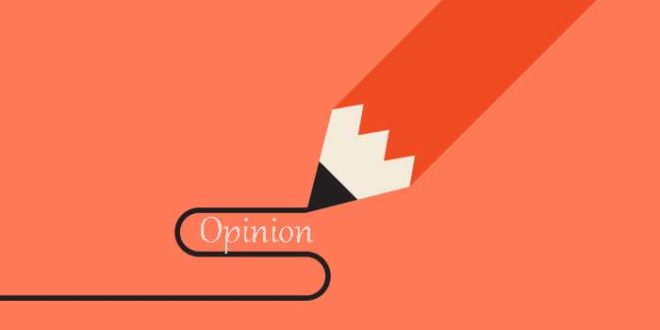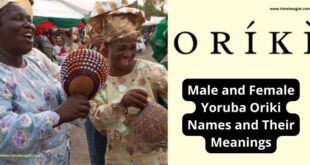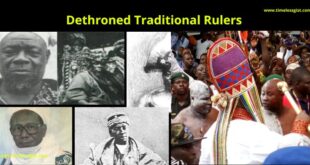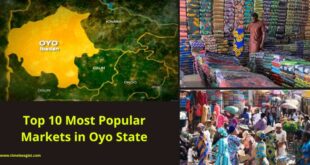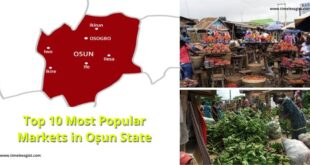Political parties in Nigeria are already gearing up for the next general election, coming up in the first quarter of 2023. The 2023 election will be the seventh election in succession since the civil rule was reinstated in 1999, after 16 years of military rule. The last six years of that military interregnum were politically defined by what has entered the history books as the ‘June 12 Struggle’. ‘June 12’ was a defining moment in Nigeria’s history and yet it has not received as much critical attention as it deserves. While the current government has declared June 12 ‘Democracy Day’, the underlying forces that worked to keep the June 12 struggle alive remain under-discussed.
The annulment of the presidential election held on June 12, 1993, sparked a chain of events that began with civic uprisings in Lagos and across Nigeria, saw a military coup that installed General Sani Abacha as Nigeria’s leader and concluded with the reinstatement of civilian rule in 1999. During those six years of revolution and counter-revolution, Nigeria’s socialist left was at the heart of the democracy movement that led the struggle on Nigeria’s streets and beyond.
The left organized within the human rights community, using organizations such as the Civil Liberties Organization (CLO) and the Committee for the Defense of Human Rights (CDHR). And at the arrowhead of their organizing and mobilization efforts were coalitions. The first of these was the Campaign for Democracy (CD). This coalition was formed in November 1991 and took a stand against the military-led political transition that led to the June 12 elections. It called for the overthrow of the military junta, and for the military rule to be replaced by a provisional government which would immediately convoke a sovereign national conference (SNC).
Also read: The Undertakers Are Coming – By Dele Farotimi
THE LEFT: RECOMPOSITION AND DECLINE
CD’s calls for popular boycott of the transition programme yielded no result. Mass anger in the wake of the annulment of the 12 June 1993 presidential election (presumably won by Chief MKO Abiola) presented the coalition with a political base to relate with for the first time. In the early days of the June 12 struggle, CD seized the opportunity, providing leadership for mass mobilization to realize the presumed presidential mandate Abiola had from the June 12 election.
However, CD split at its 4 February 1994 national convention. Its left-wing was of the opinion that CD’s demands for the restoration of Abiola’s mandate had become primary, over the coalition’s initial aim of transforming Nigeria with the convocation of a sovereign national conference being the proposed first step. After the split, CD gradually became irrelevant. The left-wing, which quit the coalition, formed the Democratic Alternative (DA) on 4 June 1994.
The DA’s formation marked the first step by some sections of the radical left to advance beyond pressure group politics and towards contestation for power, as political parties. The DA’s manifesto, the Liberation Charter, was modelled along the lines of the African National Congress (ANC) in South Africa’s Freedom Charter and set out how the DA intended to run Nigeria after acquiring power. The other section of the left, which took a similar step, was centred around Chief Gani Fawehinmi, a popular radical lawyer who had confronted several military juntas in court since 1969. Fawehinmi announced the formation of the National Conscience Party (NCP) on 1 October 1994.
Both DA and NCP operated as radical parties of protest, in defiance of a 1994 decree by the Abacha regime that banned political parties. The two parties emerged just before an ebb of the mass movement that emerged from the annulment in 1993. This was the period when Abiola was arrested. Abiola remained in detention till his death in 1998. A massive oil workers’ strike in support of Abiola’s presumed mandate was also crushed and over the next two years, the military junta ruthlessly stabilized its reign.
Also read: Emefiele’s Perfidy By Ebun-Olu Adegboruwa (SAN)
Reigniting the flames of resistance required the united efforts of a now clearly divided radical and revolutionary left. DA was central to establishing the United Action for Democracy (UAD) on 17 May 1997. UAD took up the gauntlet of radical mobilization by organizing a ‘5-million-man march’ in opposition to a ‘2 million-man-march’ in support of Abacha, who had taken up the reins of power in November 1993. But the Joint Action Congress of Nigeria (JACON) also emerged as a rival coalition to the UAD. It was organized around the NCP in rivalry with the DA’s UAD project.
Despite being political parties that were formed and forged in the crucible of struggle to end the military dictatorship, when Nigeria returned to civilian rule in 1999 neither DA nor NCP, nor indeed any other section of the radical left in the 1990s democracy movement found much success at the ballot box. The civilian wing of the ruling class took over the reins of power. Or better put, retired generals-turned-politicians took off their uniforms and retained power in civilian clothes.
Traditional politicians of the sort that had been actively involved in partisan politics since independence were late comers to the democracy movement of the 1990s. This set of politicians had collaborated with the military junta at each stage in the period leading to and immediately after the annulment of the 1993 election. Several times from 1989 to 1993, the military changed the rules of the political transition programme. At such times, politicians did not raise any objections. On the contrary, they just wanted to be clear that the junta would leave power. In 1993, for instance, Abiola claimed that he had gotten clearance from the then-military ruler, General Ibrahim Babangida, before running for the presidency. And when General Babangida annulled the same elections, the leadership of the presumed ‘Social Democratic Party’ accepted the annulment without any objection.
Also read: Peace is Costly, But Far Cheaper Than War
It was in this context that Abiola and the leadership of Campaign for Democracy gave tacit support to the military coup of November 1993 which brought Sani Abacha to power. They were under the illusion that the junta would set things right by rolling back the June 12 annulment. In 1994, when it became clear that Abacha was keen on holding on to power, the pro-June 12 section of the civilian political class and elements of the radical pro-democracy movement around CD established the National Democratic Coalition (NADECO).
NADECO adopted the ‘sovereign national conference’ slogan, which the radical left had previously advocated, but modified its underlying ideas. The earlier vision of an SNC was based on overthrowing the elites. The national question was considered secondary. NADECO made the national question primary in subsequent narratives of the SNC, reflecting elite politicians’ penchant for the political mobilization of ethnic and regional identity.
But it was not only these politicians who promoted this redefinition of the SNC agenda. Radical Yoruba ethno-nationalist groups like O’odua Youth Movement, O’odua People’s Congress and Apaapo omo O’odua were established or supported by some socialist groups. With demands that ranged from autonomy to secession, such groups became allies of the political elite in prioritizing resolution of the national question.
DEMOCRATIC REVOLUTION AND THE LEFT IN NIGERIA
The 1940s was a period of intense anti-colonial organizing in Nigeria. The emerging socialist left played important roles in these struggles. This radical force punched very much above its weight, combining the vibrancy of multiple groups including the trade union movement, nationalist parties, and the revolutionary youth movement into a cohesive struggle against colonial rule.
By the 1950s, the trade union movement in Nigeria became divided along ideological lines. The movement had split in 1948 over continued affiliation to the National Council of Nigeria and the Cameroons (NCNC), a nationalist party. Moderates within the movement argued that trade unions should not be partisan and overturned the affiliation.
Also read: The hypocrisy of the South Will Help Atiku Succeed Buhari
Younger radical trade unionists and likeminded youths in the nationalist movement built the Zikist National Vanguard as a revolutionary wing of the NCNC. In 1948, the Zikist movement issued the pamphlet, ‘A Call for Revolution’, which was presented by Osita Agwuna, a Zikist leader, at a well-attended public lecture chaired by Anthony Enahoro, a leading publicist of the nationalist movement. In 1949, there was an assassination attempt on the life of Sir Hugh Foot, the Chief Secretary to the colonial government at the time. This event opened the floodgates of repression and the eventual suppression of the Zikists.
The Macpherson constitution of 1951 signalled the pending exit of the colonialists. Nationalist politicians, who by now saw power on the horizons, became less inclined to pursue a revolutionary pathway to independence. They, thus, gradually cut their ties with the radical trade unions that had earlier supported them.
Ethnicity replaced in politics what had been the pan-Nigerian agenda of the preceding decade’s nationalist movement. The burgeoning indigenous bourgeois class rallied their ethnic and regional kinsmen behind the three major parties: Northern Peoples’ Congress (NPC), Action Group (AG) and the NCNC.
The Nigerian left established alternatives to the three major political parties, such as the United Working People’s Party, Convention People’s Party and even a Communist Party of Nigeria, but few of these parties gained much traction. It was only after Nigeria gained independence from Great Britain that party-building efforts on the organized left began to take on some level of significance.
The Nigerian left’s democratic project remained anti-imperialist in the immediate post-colonial period of the First Republic (1960-1966). The newly independent Nigerian state’s pandering to the whims of its former colonial overseers, as demonstrated with the Anglo-Nigerian Defense Pact, helped to solidify this position against Britain’s neo-colonial influence in the country.
This period also marked the beginnings of a schism between the socialists rooted in the trade unions and the academia-based Nigerian left. The trio of Wahab Goodluck, Dapo Fatogun, and S. U. Bassey emerged as guardians of the trade union left with the formation of the Nigeria Trade Union Congress (NTUC) in 1957. NTUC defined itself as a Marxist-Leninist trade union body and worked assiduously with the Nigeria Youth Congress to form the Socialist Workers and Farmers Party (SWAFP) in 1963.
SWAFP was arguably the most successful left partisan project in the country in the 1960s. It had the support of the Soviet Union, and published a bi-weekly newspaper, Advance, which was influential in Nigeria’s working-class movement. But SWAFP did not last as a united project of the Nigerian left. Within a year of its formation, there was a split in its ranks which resulted in the formation of the Nigeria Labour Party (NLP) in 1964. While the NLP was headed by Michael Imoudu, who was also a trade unionist, the majority of its leadership—including Ola Oni, Eskor Toyo and Baba Omojola—reflected the growing importance of the left outside the trade unions.
The anti-imperialist politics and democratic revolution that thrived in the 1940s and 1950s lost considerable momentum in the period beginning with Nigeria’s first republic and then onto the 1966 coup and subsequent civil war. Leftists tried to rally together after the civil war, particularly during the transition to the Second Republic (1979-1983), but they ran into immense difficulties. After a series of All-Nigeria Socialist Conferences in Zaria and Lagos from 1977 to 1978, two parties emerged reflecting the makeup of the SWAFP and NLP: the Socialist Working People’s Party (SWPP) and the Socialist Party of Workers, Farmers and Youth, respectively. But neither party successfully registered for the 1979 elections (the military junta had introduced party registration to weed out parties and candidates it disfavoured).
Also read: Ekweremadu and Nobody – Written By Bunmi Makinwa
During the Second Republic (1979-1983), democratic principles and political, social and economic freedoms remained under attack, despite the ostensible return of the military to the barracks. The Alliance for Democratic Rights (ADR) was constituted in 1983. It included the Nigeria Labour Congress (NLC), the National Association of Nigeria Students (NANS) and some fronts of left groups. The ADR was eventually dissolved in the aftermath of the December 1983 coup, and it was not until after the subsequent short-lived regime led by General Muhammadu Buhari that the Nigerian left would pick up the pieces of political organizing in furtherance of a democratic revolution.
PRELUDE TO JUNE 12: THE EMERGENCE OF THE PRO-DEMOCRATIC MOVEMENT
General Ibrahim Babangida’s regime (1985-1993) governed with a mixture of disillusionment and hope, repression and co-optation, carrots and sticks. All part of a strategy to confuse his opponents, with moves such as in 1986 when he appeared to give in to popular opposition to the IMF—only to later introduce a structural adjustment programme similar to that of the Bretton Woods institution.
A similar ploy was Babangida’s creation, in 1986, of a political bureau and national discourse on the social and economic system Nigerians wanted for the future, only to suppress the report of the bureau which captured the desire expressed by Nigerians for socialism.
Repression by the Babangida regime became more widespread after the first year of his rule. Human rights NGOs sprung up to challenge the regime, beginning with the Civil Liberties Organization which was formed in October 1987. Two years later, the Committee for the Defense of Human Rights (CDHR) was also inaugurated. (The CDHR had initially started as ‘Free Femi Aborisade Committee’, constituted to advocate for the release of Femi Aborisade, a socialist activist and editor of the Trotskyist Labour Militant newspaper.)
During this period, other broad realignments were taking place within the socialist left, many of them influenced by global events. Such events included glasnost and perestroika in the Soviet Union, and the eventual collapse of the union and the broader Eastern Bloc. Generational shifts also had an important impact on the shape these realignments took. The younger generation of socialists in the 1980s were more receptive to ideas that had, at best, been on the margins in the Nigerian left movement for decades such as Trotskyism and Anarchism.
The SWAFP/SWPP political tradition was not growing its membership and would soon die a natural death. The NLP/SPWFY renewed itself by drawing in new members, to become the Socialist Revolutionary Vanguard (SRV) in 1989.
Also read: Top 10 Recruiting NGO Jobs in Nigeria you Should Explore
Meanwhile, however, a new academia-oriented left had emerged with the growth of universities and the radicalization of the university teachers’ union. This radicalization was marked by the transformation of the more conservative National Association of University Teachers (NAUT) to the Academic Staff of Universities Union (ASUU) in 1978. ASUU activists gave birth to the Socialist Congress of Nigeria (SCON) at its founding congress in Sokoto in 1986.
Revolutionary socialist left groups outside the Marxist-Leninist mould also flourished. The Trotskyist Labour Militant, the Anarchist Awareness League (AL) and the International Socialist May 31st Movement (M31M) were all formed in this period.
Elsewhere in Nigeria, the continued environmental degradation and economic extraction of the Niger Delta was challenged by local communities in the region. The most celebrated and best organized of these efforts was the Movement for the Survival of the Ogoni People (MOSOP), led by the writer, Ken Saro-Wiwa. MOSOP led protests and organized campaigns against Shell, the major international oil company in Nigeria. MOSOP held a deep reservoir of support among the Ogonis and exercised this support in several ways, including by organizing a boycott of the 1993 election.
By 1990, Alao Aka-Bashorun, a radical activist and former president of the Nigeria Bar Association, declared that the Babangida junta had ‘a hidden agenda’ behind its transition programme. The actual intent, Aka-Bashorun suggested, was for Babangida to transform into a civilian president. Echoing those concerns, the Nigerian left rejected the legitimacy of Babangida’s transition programme. In line with similar sovereign national conferences that were common across West and Central Africa when the countries in those regions experienced their own democratic transitions, the Nigerian left demanded the dissolution of the military government and the convoking of an SNC.
As a means of institutionalizing its social-democratic agenda, an umbrella coalition of various left-wing groups was formed in 1991 under the name ‘Campaign for Democracy’. While SCON was the dominant group within this coalition, it nonetheless brought together different elements of the democratic resistance to military rule in Nigeria. The human rights committee was involved, with Dr Beko Ransome-Kuti of the CDHR becoming the chairperson of CD. Organizations of radical ethnic minority groups like MOSOP were also affiliated with CD, with Ken Saro-Wiwa elected to the umbrella group’s national leadership.
Also read: Nigeria’s Next President Deserves Pity
During the period between its formation in 1991 and the June 1993 presidential election, CD declared three times that it would convoke an SNC, with all such declarations failing to materialize. For the most part, CD’s visibility was confined to releasing press statements and hosting symposiums. CD needed a moment like June 12 to inject the dose of momentum it needed to become a mass movement. But the June 12 movement itself might not have emerged as an organized force in 1993, if a body like CD was not already available to amplify June 12’s revolutionary potential.
THE SIX-YEAR REVOLUTION AND ITS DISCONTENTS
The Social Democratic Party (SDP) and National Republican Convention (NRC) were the only two political parties Babangida’s regime allowed to contest in the June 12 presidential election. Both parties, including SDP, accepted the eventual annulment. But it was CD, which had unsuccessfully called for a boycott of the elections, that seized the moment to roar into action.
CD called for mass protests on 5 July 1993 to demand a reversal of the annulment. CD leaders expected anything between 5,000 and 10,000 people on the streets in Lagos. But the numbers of people that joined the demonstration far outstripped this.
The next six years could best be understood as three unequal phases: 1993-94 were the heady days of uprising. This wave was countered by the General Sani Abacha junta which consolidated itself in the 1995-96 period. Then 1997-99 saw a shaky new balance of power that was resolved effectively with the deaths of Abacha and Abiola, within a month of each other.
It must be noted that there was no singular radical left agenda. On the contrary, the diverse elements of the Nigerian left were split down the line in the wake of sharp debates on what the strategic approach to the conflict between the pro-June 12 political elites and those backing continued military rule should be.
One of the key areas of disagreement on the left was the degree of support the left should lend to Abiola—the presumed winner of the 1993 presidential election. Some on the left argued for unreserved support of Abiola, while those within the Trotskyist-Labour Militant camp argued for a more restrained ‘critical support’. But this position lost sight of the fact that Abiola was deeply conscious of his class position. He was not ready to align himself with a revolutionary movement that could upturn the system he had benefited from and helped to build, simply because he wanted to be president of the country.
For instance, Abiola chose to meet with Babangida overnight rather than await the arrival of protesters to his house on 5 July 1993. It was only after the insistence of the crowd that Abiola briefly showed up to address us (I was one of the protesters). In November 1993, Justice Dolapo Akinsanya judged that the interim national government was illegal and, consequently, there were pro-Abiola demonstrations. But Abiola asked students to return home. He was, instead, in cahoots with Abacha, supporting a putsch as the way to reclaim his mandate.
Uncritical support for Abiola’s mandate as a Yoruba politician also paved the way for the formation of O’odua self-determination groups, including the O’odua Youth Movement, in September 1994. Over the next few years, similar movements—including the O’odua People’s Congress and the O’odua Liberation Movement—emerged as the Abacha regime, which had seized power in a November 1993 coup, consolidated its hold on power. The argument for democratic revolution and socialism was slowly replaced with one for self-determination, including secession.
Fissures within the various left groups were reflected in the splintering of the Campaign for Democracy in February 1994. The factions committed to broader goals beyond the validation of Abiola’s mandate left the Campaign for Democracy and later formed the Democratic Alternative (DA), a party modelled after South Africa’s ANC. The DA aimed to gain power through the ballot or organized civil disobedience. Chima Ubani was a central figure in the DA and its politics. He was a tireless organizer with an amiable disposition who was respected across the different divides of the left. He helped build CD from the scratch as the coalition’s General Secretary. While he led the faction which left CD in 1994, he maintained relatively cordial relations with many of those he left and was thus able to win some of them to join in forming UAD in 1997. The National Conscience Party was formed by Chief Gani Fawehinmi and his supporters on 1 October 1994. It stood in defence of the Abiola mandate but declared itself interested in power as well, presenting a ‘10-Care Programme’ as its manifesto to fulfil its motto: ‘abolition of poverty’.
Before these splinter groups could develop some momentum, however, the Abacha regime sprung into repression, beginning with the breakup of the 1994 oil workers’ strike.
By 1997, when Abacha’s civilian transition programme was well underway, the need for realignment of radical left forces, if the democracy movement was to realize its goals, was palpable. This led to the formation of new coalitions: UAD and JACON. The DA was the inspiration behind UAD, while NCP was the primary organization in JACON.
But neither of these two parties or any other formations on the left would benefit from the democratization that ushered in the Fourth Republic (1999-present).
Also read: Soludo & the Predicament of Barabbas – Austin Tam-George
THE RISE AND FALL OF THE LEFT; WHAT NEXT?
Many factors explain the rise and fall of the left with ‘June 12’. Infighting and a lack of lasting unity was definitely a major factor. But much more than this was the fact that, even when left-wing organizations were formally reconstituted as parties, they found it difficult to muster resources and adequately seize political opportunity structures.
Some arguments in this same direction would reduce the contest for power to the electoral realm. But even those would lose sight of the fact that winning office does not necessarily amount to winning power. Radical parties cannot reduce their struggle for power to electoral contests. But they need to see protests as one aspect of building nationwide political structures. Electoral contests might not be sufficient to consolidate democracies, but they are necessary for building power to bring about an alternative system through mass action.
The left is yet to adequately address the challenges posed in the June 12 period. In 2019, one-tenth of the 73 parties on the presidential election ballot were arguably on the left. And yet their cumulative votes did not account for up to 0.2 per cent of the total votes. At best, the Africa Action Congress led by Omoyele Sowore secured around 0.1 per cent of the votes. The AAC is also the only leftist party that has been able to mobilize for protests on the streets in several states of Nigeria.
As Nigeria heads towards the 2023 election, there will likely be several leftist candidates’ names on the ballot. But such candidates will not have a meaningful impact on the country’s politics if they do not have a critical mass base. Genuine efforts at building programmatic unity would be invaluable for building such a base.
Source: saharareporters
